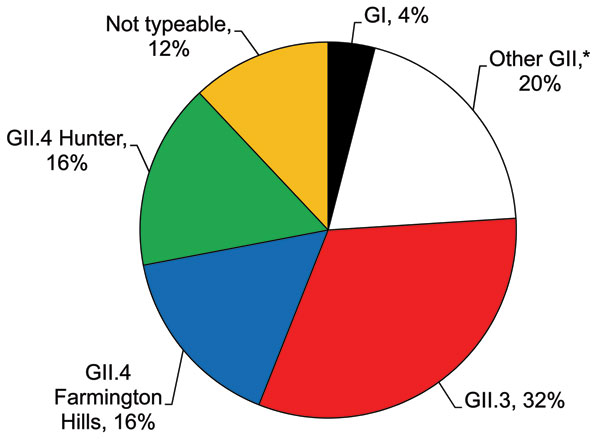Volume 17, Number 8—August 2011
Research
Incidence of Acute Gastroenteritis and Role of Norovirus, Georgia, USA, 2004–2005
Figure 3

Figure 3. Distribution of norovirus genotypes among 25 outpatients with acute gastroenteritis, Kaiser Foundation Health Plan of Georgia, Inc., USA, March 15, 2004–March 13, 2005. Genogroup II (GII) was more prevalent than GI. *Includes GII.2 (2 specimens), GII.14 (2 specimens), and GII.17 (1 specimen).
Page created: August 15, 2011
Page updated: August 15, 2011
Page reviewed: August 15, 2011
The conclusions, findings, and opinions expressed by authors contributing to this journal do not necessarily reflect the official position of the U.S. Department of Health and Human Services, the Public Health Service, the Centers for Disease Control and Prevention, or the authors' affiliated institutions. Use of trade names is for identification only and does not imply endorsement by any of the groups named above.